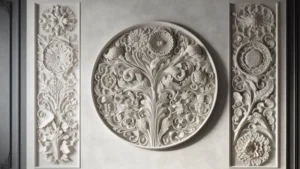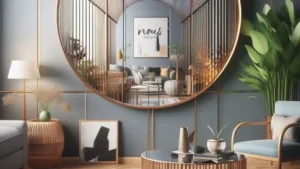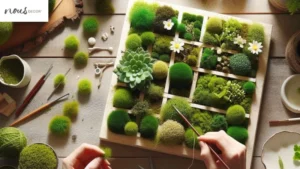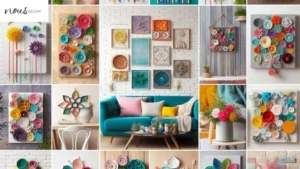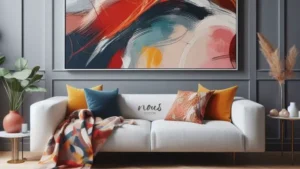Plaster Wall Art Material refers to plaster that has been molded, carved, or otherwise shaped into decorative designs and motifs directly on walls or sculpted separately to be mounted on walls. The plaster is prepared from a mixture of powdered gypsum or lime and water, forming a paste which hardens as it dries.
In this article, Mark Cutler explore What is Plaster Wall Art Material, the use of materials like plaster relief, plaster cloth, and drywall mud to craft stunning textured DIY wall pieces.
Discover how to use joint compound, acrylic paint, and fabric to create unique plaster sculptures and textured canvases, making DIY textured wall art an enjoyable and accessible endeavor. Whether you’re an experienced artist or a novice decorator, you’ll find inspiration in the versatile world of plaster wall art material.
Takeaways
- Plaster Wall Art Material, comprising gypsum, sand, and water, holds a timeless allure in the world of artistic expression.
- Its usage, tracing back to ancient civilizations such as the Egyptians and Romans , exemplifies its enduring legacy.
- Artists employ various techniques, including bas-relief and sgraffito, to craft intricate designs.
- Despite its historical significance, plaster wall art is not without its challenges; the need for preservation arises due to potential issues such as cracking and deterioration
- Beyond the annals of history, plaster continues to find relevance in contemporary interior design, adding elegance and uniqueness to modern spaces
- Moreover, a growing focus on sustainable alternatives in its creation speaks to concerns regarding the environmental impact
- Plaster wall art is a medium through which artists express diverse artistic styles and themes , using a wide array of tools like sculpting knives and brushes, alongside pigments
- Its cultural significance, imbued with unique symbolism, varies across different societies
- In the realm of creativity, artists often find inspiration in nature, history, and personal experiences when working with this captivating artistic medium
- The journey toward mastery might entail formal education or apprenticeships in the craft of plaster wall art
- In essence, plaster wall art material is a versatile and enduring medium that seamlessly bridges the realms of history, artistry, and modern aesthetics.
What Is Plaster Wall Art Material?
Plaster wall art material refers specifically to the plaster paste, composed mainly of gypsum or lime and water, that is used to make decorative wall art pieces and sculptures. It is molded wet and hardens when dry.
- Plaster is a building material made from a mixture of lime or gypsum, sand, water and sometimes other additives. It is used for coating interior walls and ceilings and for creating decorative moldings and medallions.
- For wall art, plaster can be shaped when wet into reliefs, sculptures or other decorative elements which harden as they dry.
- Plaster wall art is often pre-cast and then mounted on walls. It can also be sculpted directly onto walls in a technique called plaster relief.
- Advantages of plaster wall art include its lightweight nature compared to stone or cement sculptures, its ability to take fine detail, and the way it adheres nicely to walls.
- Plaster art can be painted any color after it has dried. Unpainted, it is usually white or off-white. Plaster can also be gilded or affixed with ornamentation while still soft.
- Plaster wall art ranges from geometric patterns and bas relief medallions to intricate figural sculptures. Common themes are classical, mythological, religious or natural subjects.
- Plaster art requires sealing to protect it from moisture and should be kept away from direct sunlight to avoid cracking or warping over time. With proper care, plaster wall art can last for many decades.
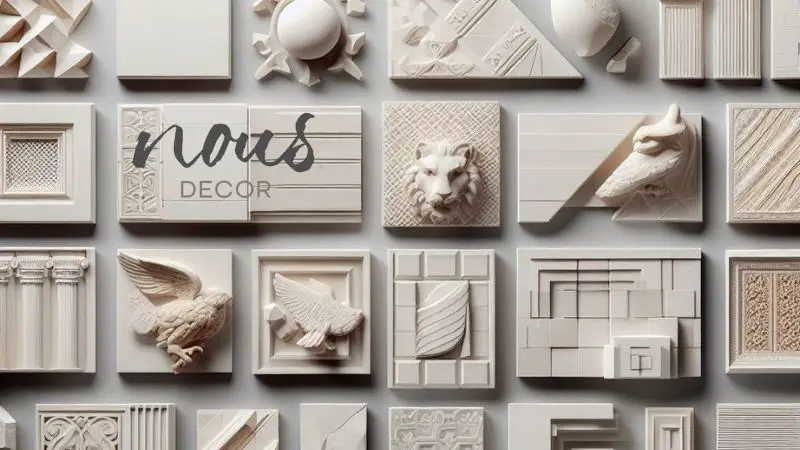
Advantages of Cement Wall Decor Collection
When it comes to creating captivating and custom wall decor without the need for a hefty price tag or a studio, DIY plaster textured art is the way to go. Here are five compelling reasons to consider this contemporary approach:
- Easy DIY Techniques: Whether you’re an artist or not, you can’t go wrong with DIY plaster art. Thanks to online resources like YouTube and art tutorials, you’ll find a wealth of guidance at your fingertips.
- Customizable Patterns: Plaster fabric opens the door to endless possibilities. You can’t find this level of customizability in plain, off-the-shelf decor. It’s a chance to create art that perfectly matches your style and personality.
- Ancient Greek and Roman Inspiration: The roots of plaster art relate back to the architecture and figure work of ancient Greek and Roman civilizations. You’ll find something truly timeless in the texture and depth it brings to your creations.
- Handmade with Love: Every cast, texture, and frame is lovingly made by your own hands. It’s a world away from mass-produced art and heavy price tags.
- Affordable and Accessible: DIY plaster art doesn’t slap you with a hefty price tag. You can grab your materials without breaking the bank and create art without the need for a dedicated studio. Plus, it’s a fantastic way to keep your space looking unique and beautiful.
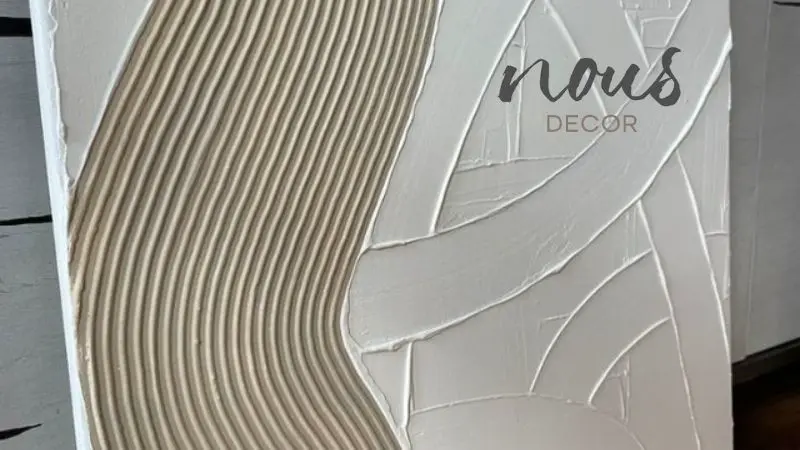
So, if you’ve ever thought, “I can’t afford unique art” or “I don’t want the same plain decor as everyone else,” look no further. DIY plaster textured art allows you to find something truly one-of-a-kind and be the curator of your very own art collection.
Just keep in mind the final touches, shipping options to ensure your art safely reaches its destination, and you’ll be on your way to creating stunning textured 3D wall art that will make you happy every time you walk into the room.
Composition of Dry Plaster Texture
Crafted with care, this gorgeous creation is made up of a unique blend of elements that will captivate your senses! Plaster-made Décor is composed of a mixture of cement, water, and sometimes additives such as paint, colorants, and pattern agents.
Cement is a versatile material that is often utilized for patterning and sculpting, making it ideal for making unique decorations. This material is not hard to work with and can be manipulated into any desired shape or pattern. It is also very durable and can withstand all sorts of wear and tear.
As a result, Plaster-made Décor is sure to last for years to come. From its unique composition to its versatility and durability, Plaster-made Décor is truly a masterpiece! Moving on to the next topic, let’s explore the advantages of Plaster-made Décor.
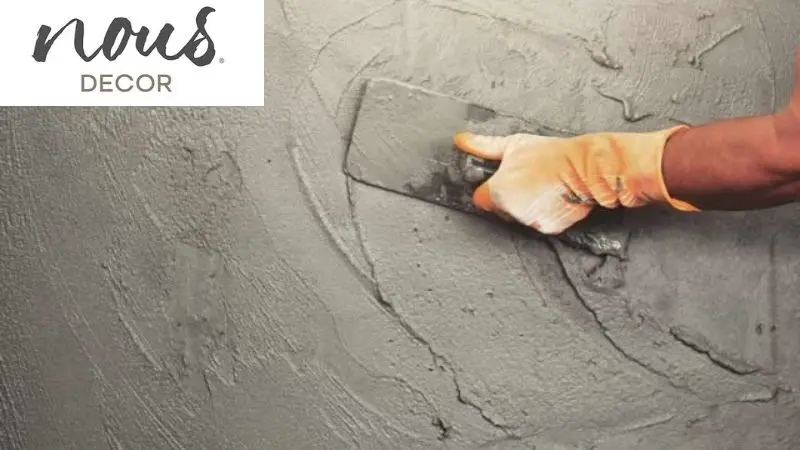
Techniques for Creating Plaster-made Décor
Bringing life to any room, Plaster-made Décor can be made utilizing a variety of techniques to truly make a space unique. Patterning techniques such as sanding, scoring, and stippling make a unique pattern, while stenciling methods can be utilized to apply a pattern to the screen.
Another technique is to make a bas-relief, which is a type of sculptural decoration that is made by carving a design into cement. Additionally, the use of tools such as trowels and chisels can be utilized to make additional patterns and depth to the screen.
You can try combining the artwork with stones by understanding stone art techniques for a more mixed and unique decoration.
With the right techniques, Plaster-made Décor can be utilized to truly transform a room and make it a unique space. With this in mind, plaster can also be utilized in decorating to add an extra layer of style and sophistication.
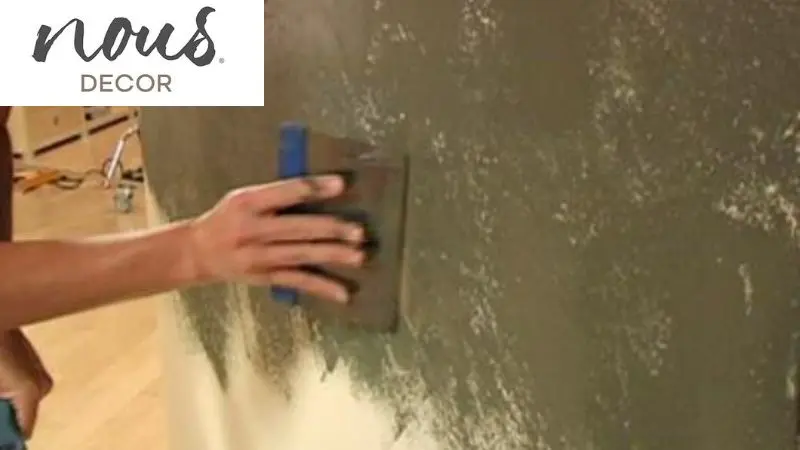
With the right combination of vibrant cement-made decorations, you can instantly transform any room into an artwork.
You can make some truly amazing designs with Plaster-made Décor – why not get creative and make something unique? DIY plaster-made projects are a great way to get started with Plaster-made Décor, as you can easily customize any screen finish.
Frequently Asked Questions
Conclusion
Nousdecor explored the wonderful world of Plaster Wall Art and discovered its many benefits. From its unique composition to its not hard application, Plaster-made Décor is a great option for anyone looking to add a personal touch to their home.
It’s a great way to bring pattern, depth, and interest to any space. It’s also a great way to get creative and make a statement.
What’s even more impressive is that Plaster-made Décor is affordable, too. With the average cost of Plaster-made Décor ranging between $10 and $30 per square foot, it’s an economical choice that won’t break the bank.
With its versatility, affordability, and unique beauty, Plaster-made Décor is an excellent choice for any home.

